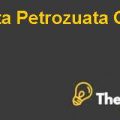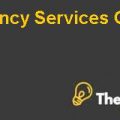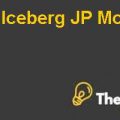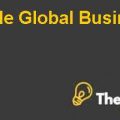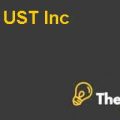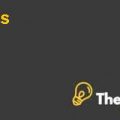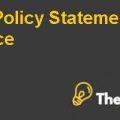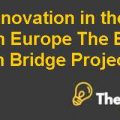Moly Corp Financing the Production of Rare Earth Minerals: Case Study Analysis
Introduction:
Moly Corp is one of the best mining corporations in the world. It is the corporation of America the headquarters are located in Greenwich. This company mine valuable minerals from the soil and this company produces non-polluted minerals from the soil. In the year 1949, Moly Corp discovered metallic life in the soil. In the year 2011, the company announced that they earn more revenue from mining sales(Mayfield, 2015). This project aimed to generate 20,000 tons of Erratic Earth oxides for the coming 30 years.
Problem statement:
Moly Corp is facing a financial collapse and a fall in market shares.
Risk:
One of the major risks for Moly Corp Financing the Production of Rare Earth Minerals is a change in government guidelines regarding rare earth mineral production. The latest advancements in the market may boost the company's performance by having a rapid shift in technology.
Financial Analysis
Leverage ratio:
The company has a low leverage ratio in 2009 in this year company has a low debt with high equity. The leverage ratio is increasing from 2009 to 2012 which is not good for the company. Ratio increases from o.30 to 1.15 as shown in the following table.
Moly crop is not at the optimal leverage ratio.
Total Working Capital:
The value of total working capital also increases because in mining projects the company uses to take a loan from China and a bank.
Total capital expenditure:
Total capital expenditure increases for this project. In the year 2012, the value of expenditure is $1714.2 million.
External financing Needs
The external financing need for a company that forecasts in 2012 is $1465.8 million from which the company pays the shareholders and bank.
| 2009 | 2010 | 2011 | 2012 | |
| Leverage Ratio | 0.309651 | 0.073908 | 0.484974 | 1.1593 |
| Total working capital | 9 | 332.7 | 460.4 | 275.4 |
| Total capital Expenditure | 79.2 | 126.1 | 612.6 | 1741.2 |
| External Financing Needs | 70.2 | -206.6 | 152.2 | 1465.8 |
Elements of Business Plans:
The purpose of this financing approach is for management to effectively raise enough capital to outlast their existing credit status and pay near-term creditors with as little dilution to current shareholders as possible. The company is exploring three different financing alternatives to support Project Phoenix: direct debt in the form of bonds, convertible debt, or issuing ordinary stock.
Straight Debt
Raising pure debt would be the least dilutive to present shareholders, but with Five-Year notes with a 10% semi-annual coupon and a face value of $1000, it would be an expensive raise. They'd sell for $950 per bond, have a CCC rating, and tight legal provisions to safeguard the creditor.
In terms of straight debt valuation, we assume a growth rate of 1.4 percent, a tax rate of 35 percent, and cash flows estimated from future financial statements. The weighted average cost of capital (WACC) is 14.32 percent. This information is used to calculate the enterprise value, which is $2086.036 million. Finally, we subtracted debt from cash to arrive at the entire worth of equity, which is $1620.336 million. The price per share is $14.747, with 109.9 million shares outstanding.....
Moly Corp Financing the Production of Rare Earth Minerals Case Study Analysis
This is just a sample partial case solution. Please place the order on the website to order your own originally done case solution.

